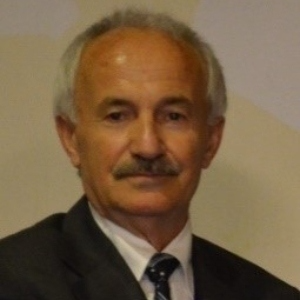Title : Lattice reactions and chemical factors governing shape reversibility in shape memory alloys
Abstract:
A series of alloy systems take place in class of advanced smart materials with adaptive properties and stimulus response to the external changes. Shape memory alloys take place in this group, due to the shape reversibility and capacity of responding to changes in the environment. These alloys exhibit a peculiar property called shape memory effect, which is characterized by the recoverability of two certain shapes at different temperatures. This phenomenon is initiated by cooling and deformation processes and performed thermally on heating and cooling. Therefore- this behavior can be called thermoelasticity. These alloys have dual characteristics called thermoelasticity and superelasticity, from viewpoint of memory behavior. Shape reversibility is governed by lattice reactions and some chemical factors, like atomic bonds, internal friction and lattice vibration. Lattice reactions are two successive crystallographic transformations, thermal and stress induced martensitic transformations. Thermal induced transformation occurs along with lattice twinning on cooling and ordered parent phase structures turn into twinned martensite structures, and twinned structures turn into the detwinned structures by stressing material in low temperature condition by means of stress induced transformation. Superelasticity is performed mechanically by stressing and releasing material at a constant temperature in parent phase region, and shape recovery is performed simultaneously upon releasing the applied stress. Superelasticity is performed in non-linear way; stressing and releasing paths are different in the stress-strain diagram, and hysteresis loop refers to energy dissipation. The elementary processes involved in such martensitic transformations are lattice invariant shear, lattice twinning and detwinning. It is well known that lattice twinning and detwinning reactions play a considerable role in shape memory effect and superelasticity. Thermal induced martensitic transformation occur with the cooperative movement of atoms by means of shear-like mechanism in <110>-type directions on {110} -type planes of austenite matrix. Copper based ternary alloys exhibit shape memory in β-phase field. Lattice invariant shear and twinning is not uniform in these alloys, and cause to the formation of long period layered martensitic structures with lattice twinning on cooling.
In the present contribution, electron diffraction and x-ray diffraction studies performed on two copper based CuZnAl and CuAlMn alloys. Electron diffraction patterns and x-ray diffraction profiles exhibit super lattice reflection. Specimens of these alloys aged at room temperature, and a series of x-ray diffractions were taken duration aging. Reached results show that diffraction angles and peak intensities change with aging time, and this result refers to the rearrangement of atoms in diffusive manner.
Keywords: Shape memory effect, martensitic transformation, thermoelasticity, superelasticity, lattice twinning, detwinning.



